What is lead generation in digital marketing? How do you get more leads online? These are questions I encounter regularly from small business owners, entrepreneurs, content creators, and influencers.
And they’re important questions for anyone who wants to grow their business online. After all, finding leads is a necessity for all businesses. But, it is also a major challenge that every single marketer faces today.
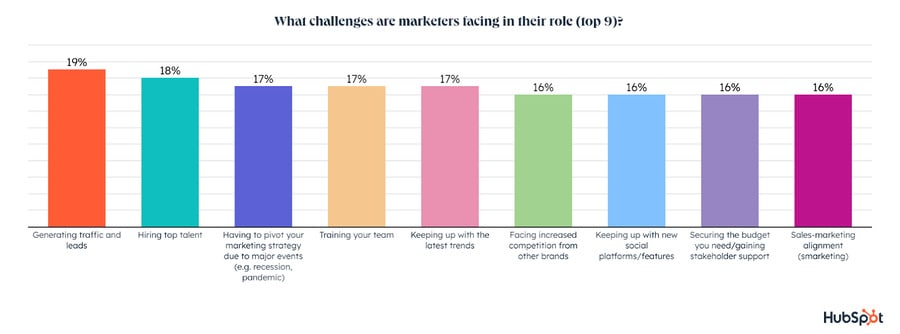
I have been there myself – struggling hard to get leads while I was just starting my entrepreneurial journey. But over the years, I’ve found what works, and today I want to share it with you.
Even if you are starting out into digital marketing, this post will help you understand what a lead is and how to generate more leads to grow your business.
What is a Lead?
A “lead” is someone who has shown interest in your product or service. For example, if you're a company that sells software, a lead might be someone who requests information about your product or signs up for a free trial.
Leads are people who might be interested in doing business with you but haven't made a commitment yet.
Think of it this way: You have a car dealership. If someone came up to you and said they were interested in buying a new car, they'd be a lead. But if they actually went to the dealership and bought the car, they'd be a customer.
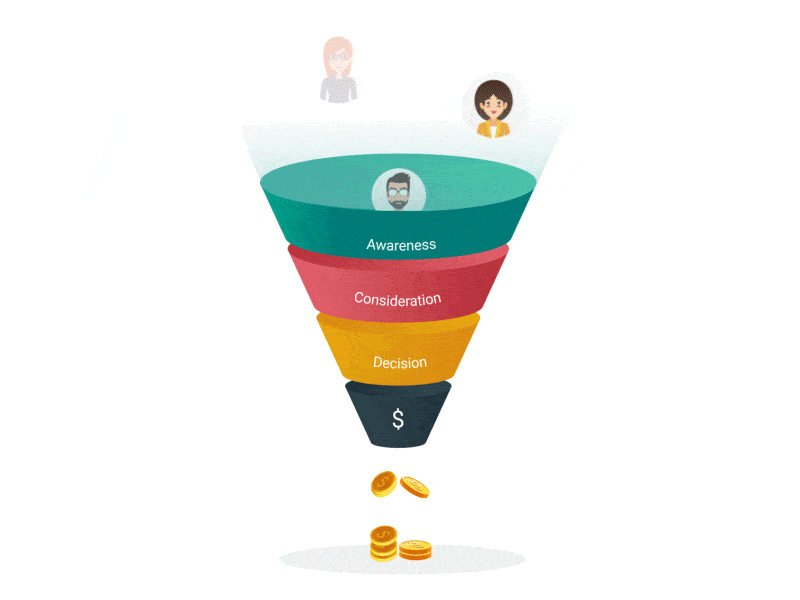
Why Do You Need Leads?
Now you know what leads are, let’s try to understand why exactly businesses cannot thrive without leads?
Having a steady stream of leads helps ensure that there is always a pool of prospective buyers that can be pursued. When you nurture them effectively, they can turn into paying customers. You need leads to keep your sales pipeline growing.
Leads also help you to stay ahead of competitors. By actively cultivating leads, you are able to reach out to potential customers before your competition does. This gives you a better chance of securing those customers and building relationships with them.
In addition, leads provide businesses with invaluable insights into the market they operate in. Through lead generation, businesses can better understand demands and trends in their industry. This helps them to develop more effective marketing campaigns that target the right audience.
Finally, leads are essential for measuring the success of marketing efforts. By tracking conversions from lead to customer, businesses can gauge the effectiveness of their campaigns and adjust accordingly. With this data, they can refine their sales and marketing strategies to meet the needs of their target audience better.
What is Lead Generation in Digital Marketing?
Lead generation in digital marketing is the process of attracting and converting scrollers into prospects and customers by using various online channels.
The goal of lead generation is to build relationships with potential customers, nurture them through the sales process, and ultimately convert them into paying customers.
In order to do this effectively, it is important to have a comprehensive understanding of your target audience, their needs, and how they interact with digital channels.
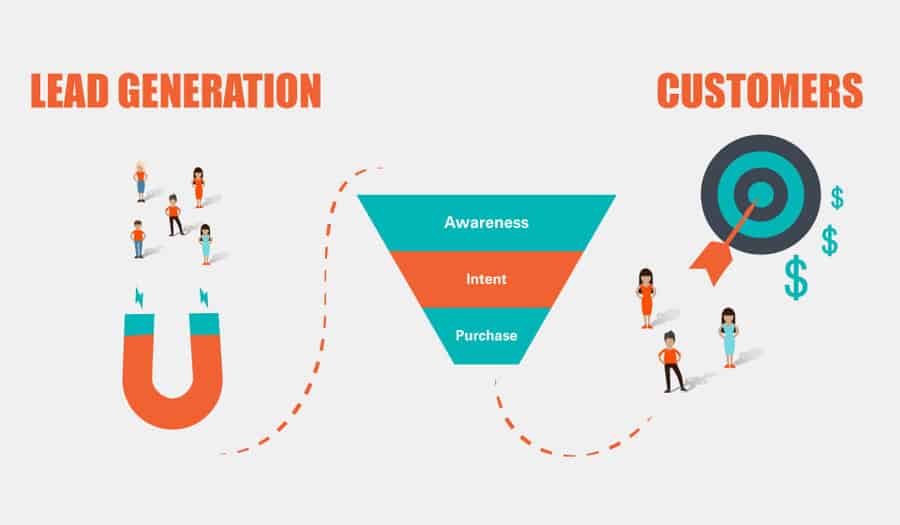
Most digital marketers use one or more of these five methods:
- Content marketing
- Search engine optimization (SEO)
- Pay-per-click (PPC) advertising
- Social media marketing
- Email marketing
By leveraging the power of these online channels, your business can gain more visibility online. Through the use of engaging content, you can capture leads and create an effective sales funnel that converts prospects into long-term customers and advocates.
Now that you understand lead generation, let’s take a closer look at why it is important.
Why Do You Need Lead Generation For Businesses?
Ah, marketing leads! They are the holy grail of any business’s success. After all, without leads, how would you ever find new customers?
Sure, you could try cold-calling, but that method is pretty outdated and not very effective. Not to mention, it is also incredibly time-consuming.
That's where lead generation comes in.
If you relate to any of the scenarios discussed below, you should definitely consider lead generation for your business:
- You're sick of spending money on marketing that doesn't work.
- You're tired of cold calling and door-to-door sales.
- You want to target your ideal customer.
- You want to increase your sales.
- You want to improve your conversion rate.
- You want to save time and money.
- You want to scale your business.
- You want to be more efficient.
- You want to increase your ROI.
- You want to stay ahead of your competition.
Relatable? If you’re still on the fence about whether or not you need to invest your resources in lead generation specifically, consider all of the benefits.
Here are some of the main advantages of lead generation:
1. Helps businesses grow their customer base
Lead generation involves identifying potential customers, collecting their contact information, and using those leads to build relationships with them. This process helps you find the right people who are interested in your business and can help you reach more potential customers.
2. Increases sales and revenue
By generating leads, businesses can convert more prospects into customers. This can lead to an increase in sales and revenue for the business.
With strategies that target specific customer profiles, companies can ensure that their message resonates with the right people at the right time.
An effective way to generate leads is by using pop-up forms. Pop-ups are small visual prompts that pop up on the screen when someone visits your website or clicks a link.
They offer visitors an incentive such as a discount, coupon, or free trial in exchange for signing up for your mailing list or newsletter. Pop-ups allow you to capture potential contacts and turn them into paying customers by nurturing them through marketing campaigns.
Additionally, lead generation can be used to identify new opportunities for business growth and expansion. By connecting with potential leads through various channels, companies can gain valuable insights into market trends that could help inform future marketing strategies.
3. Helps businesses save time and money
Lead generation also helps businesses better understand what types of activities will interest potential customers, so they can target them more effectively.
By understanding which services or products have the best chance of drawing in prospective buyers, a company can focus its marketing efforts on those particular items or services and make sure that it’s offering something that’s going to be attractive to consumers.
By generating the right kind of leads, businesses can focus their time and resources on converting prospects into customers. This can help businesses save time and money that would otherwise be spent on marketing and advertising.
4. Helps businesses create a competitive advantage
By generating leads, businesses can create a competitive advantage by reaching new markets and creating a larger customer base. This can help businesses maintain their success rate and scale up faster.
B2B Lead Generation vs B2C Lead Generation
When marketing a product or service to a customer, it is important to understand the difference between B2B and B2C customers.
B2B stands for “business-to-business” and describes when one business sells its products or services to another business. On the other hand, B2C stands for “business-to-consumer” and describes when a business sells its products or services directly to consumers.
The main difference between B2B and B2C customers lies in their priorities. Businesses often prioritize efficiency and cost savings over customer experience, whereas consumers are more focused on convenience, quality, and personalization.
They are looking for different things at each stage of the funnel. Here is an infographic that shows the key difference between B2C and B2B leads:
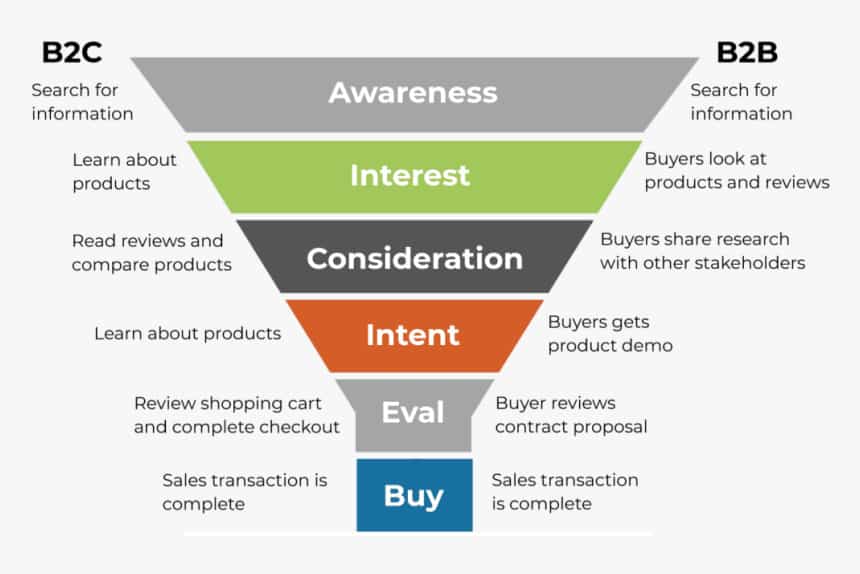
That brings us to the point: How does it impact lead generation? From the approach you take to the lead generation tactics that you focus on will vary for both B2B and B2C businesses.
Let’s understand these differences in detail.
1. Focus And Approach
The focus and approach taken to lead generation differ between B2B and B2C due to the different nature of the customers being targeted.
B2B businesses typically purchase products or services for long-term use, meaning that their decisions are more complex and involve a greater number of stakeholders.
B2B sales cycles include numerous steps such as research, negotiation and consultation. Additionally, since B2B businesses make larger purchases, they’re more likely to do extensive vetting of potential vendors. This requires them to dedicate greater resources and time into decision-making.
All of them add to the amount of time it takes for a sale to be complete.
When it comes to B2B lead generation strategies, the focus is mostly on educating potential buyers about the product or service. Through white papers, webinars, case studies, blog posts, and other such content marketing strategies, you want to win their trust.
Whereas in B2C, it's all about the fast lane! You don't have time for extended conversations; you need to grab attention quickly and show prospects how they can benefit from your product or service. It's a case of winning them over with great offers and slick marketing!
2. Context
If you’re generating leads for a business-to-business (B2B) model, you need to make sure your content appeals to the analytical minds of C-level executives. You need to be able to back up what you say with data and show measurable results.
Conversely, when targeting consumers, you need to offer solutions that appeal to their emotions and address their problems directly
The bottom line is – don’t expect a CEO to be swayed by a discount code!
B2B lead generation targeting is more specific while B2C lead generation can be wide-reaching .
So, if you want your lead generation strategy to really hit the mark in either B2B or B2C contexts, take the time to understand your target audience and tailor your content accordingly.
3. Sales Cycle
In B2B, the sales cycle can last weeks, or months. You need to build trust with potential customers and create a tailored solution that fits their needs before they’ll buy from you. It takes patience, tenacity, data and a lot of numbers.
On the other hand, B2C sales cycles can be a lot shorter. A customer may only need to make one purchase decision before they buy from you – no long-term commitment needed! Once they make a purchase, you can offer incentives that encourage them to make repeat purchases.
4. Tactics
When it comes to creative tactics for generating leads, B2B often relies on traditional methods like webinars, white papers, and email campaigns. These are often the best channels to get access to B2B professionals and get their attention.
Meanwhile, B2C may involve more trending approaches like influencer marketing, viral videos, and guerilla campaigns.
How to Generate Marketing Leads: 5 Best Strategies
But how do you go about generating more leads without overselling? Well, luckily for you my friend, there are plenty of strategies that work well when it comes to finding those hotshot marketing leads.
1. Use Social Media to Your Advantage
Did you know that, on an average, a person spends approximately 2 hours and 29 minutes every day on social media? Your target prospects are active users of these platforms these platforms. If you can capture their attention, offer them value, you can begin generating leads right there.
In fact, a report shows that social media is the top marketing channel to generate more leads.
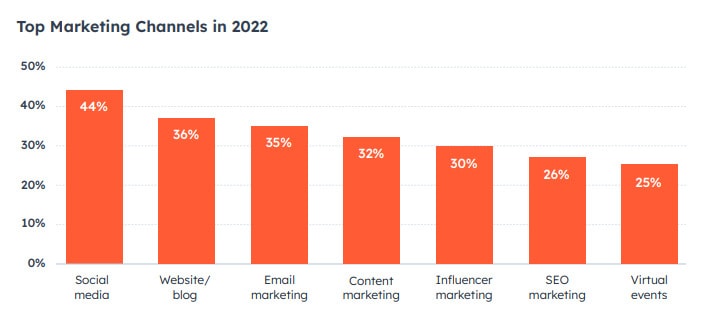
Now that we know about the unquestionable importance of social media, let's talk about utilizing it's full potential in generating leads and growing your business. Here are some ways in which you can leverage social media to get more leads for your business:
A. Utilize Targeted Ads
Social media platforms such as Facebook, Instagram, and LinkedIn offer targeted advertising options that allow businesses to target users with specific interests or demographics.
This helps ensure that ads are seen by people who are more likely to be interested in the product or service being offered, increasing the chances of lead generation success.
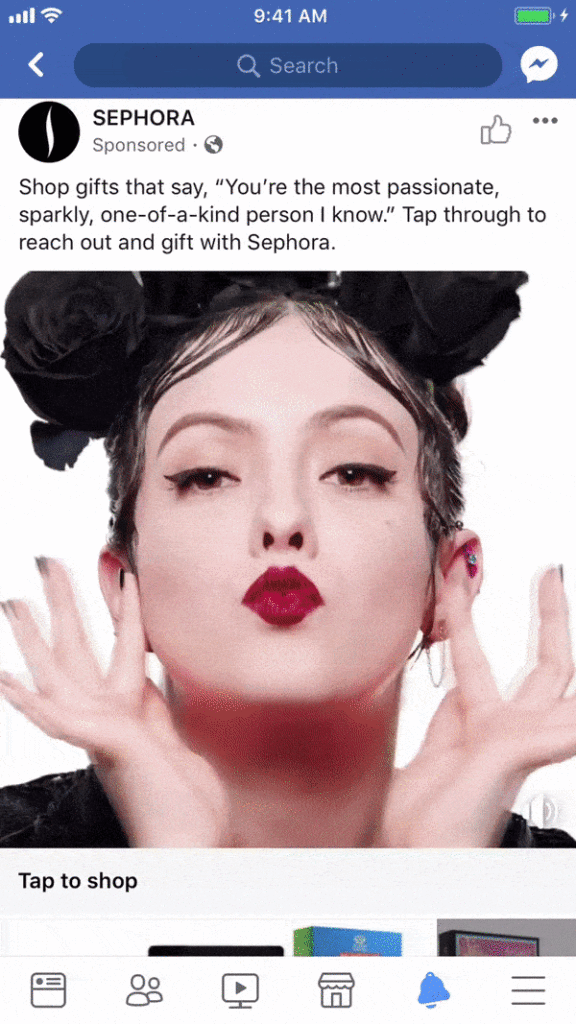
B. Host Contests and Giveaways
Contests and giveaways are popular among social media users, so businesses should take advantage of this by offering these events to their followers. Doing so encourages people to visit the business’s page, learn more about its offerings, and potentially become a lead.

C. Create Lead Magnets
Lead magnets are an effective way to entice people to opt into a business’s email list in exchange for something valuable, such as an ebook or free download. This strategy can be used on social media or on your website to encourage followers to sign up.
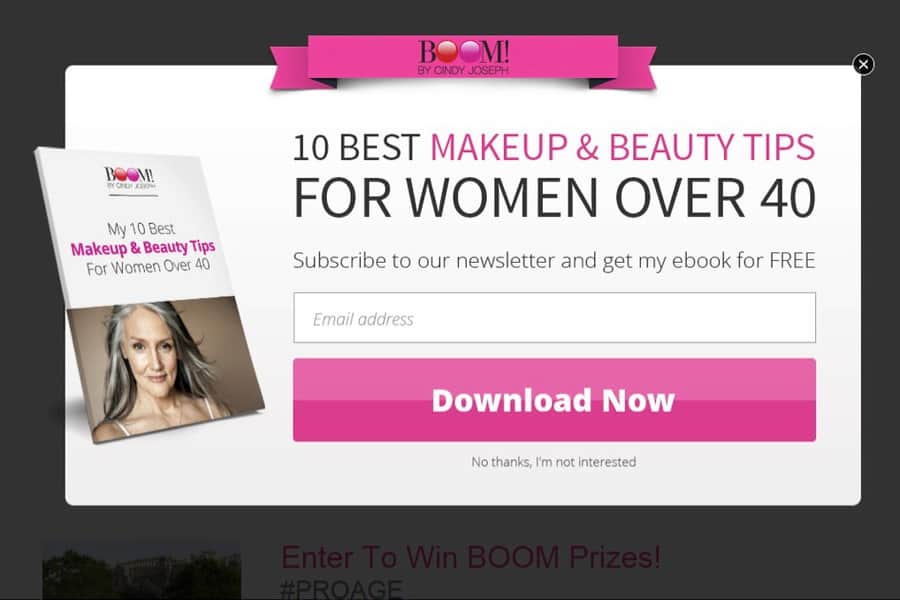
D. Start a Conversation
Social media is all about interacting with others, so you should make an effort to engage with your followers. Doing so helps build relationships and trust, which can eventually lead to more people becoming leads.
For example, Benefit Cosmetics started an Ask Me Anything (AMA) session on their Instagram page with their team. When a user asked a question on promoting eyebrow growth, their team organically promoted their BROWVO Conditioning Primer.
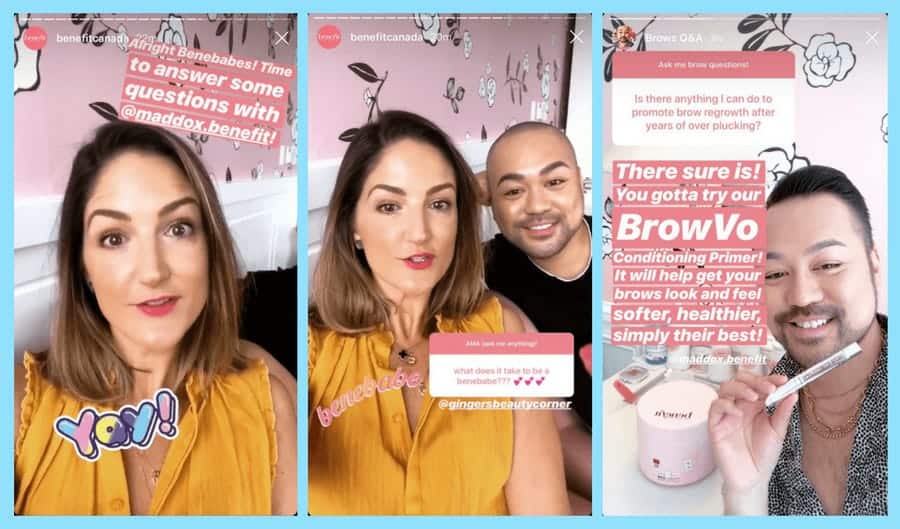
E. Humanize Your Brand
People connect better when there’s personal touch in brand communication. Storytelling, sharing This can be done through storytelling, sharing content related to the company’s values, or engaging with followers on a personal level.

2. Get Creative with Content Marketing
An effective content marketing strategy for lead generation needs to be targeted and deliberate. This requires creating content that is specifically designed to move prospects through the sales funnel, from brand awareness to sales close.
To optimize your lead generation efforts, it's essential to create content tailored to each stage of the funnel.
Here are some examples of how you can use content marketing strategies for lead generation based on the funnel stage:
A. Create a Blog Series
Use your blog to discuss topics related to your product or service in-depth, with each post being part of an ongoing series. This will provide valuable information while helping you establish yourself as an expert in the field.
This content is for those prospects who are at the top of the funnel and are just getting introduced to your product or services.
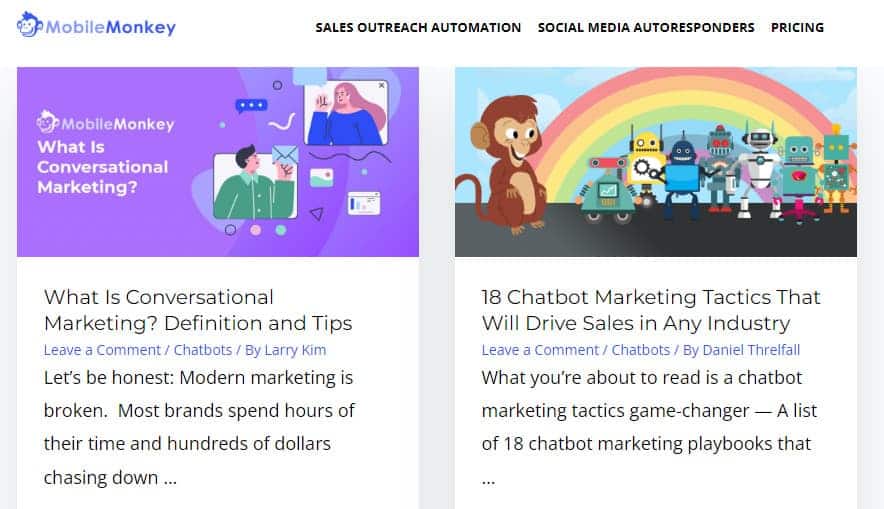
B. Host Webinars
Webinars allow you to engage with potential customers in real time, while also providing valuable content. You can use webinars to answer customer questions and demonstrate how your product or service works.
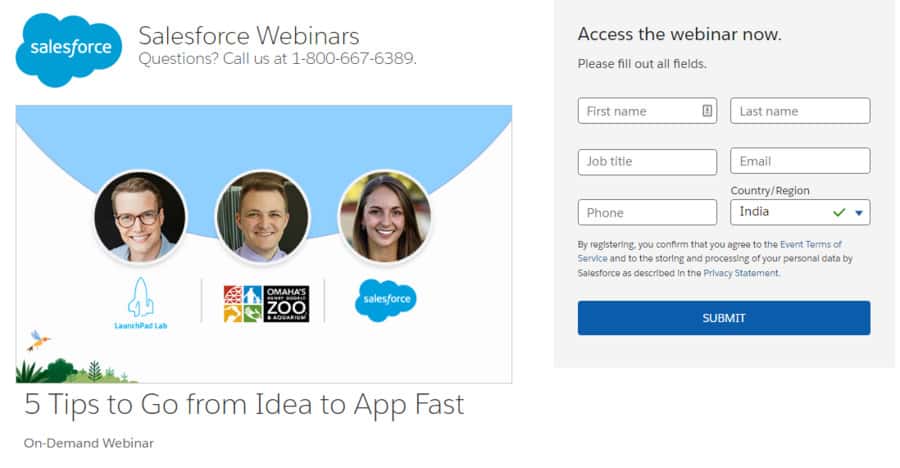
C. Produce Educational Videos
Create short tutorials, explainer videos, and other educational videos that will help potential customers learn more about what you offer. These can be uploaded to YouTube or embedded into blog posts for maximum visibility.
D. Share Case Studies
Showcase how your product or service has been successful by sharing detailed case studies with potential customers. This will help them understand the value of your offering and encourage them to take action.
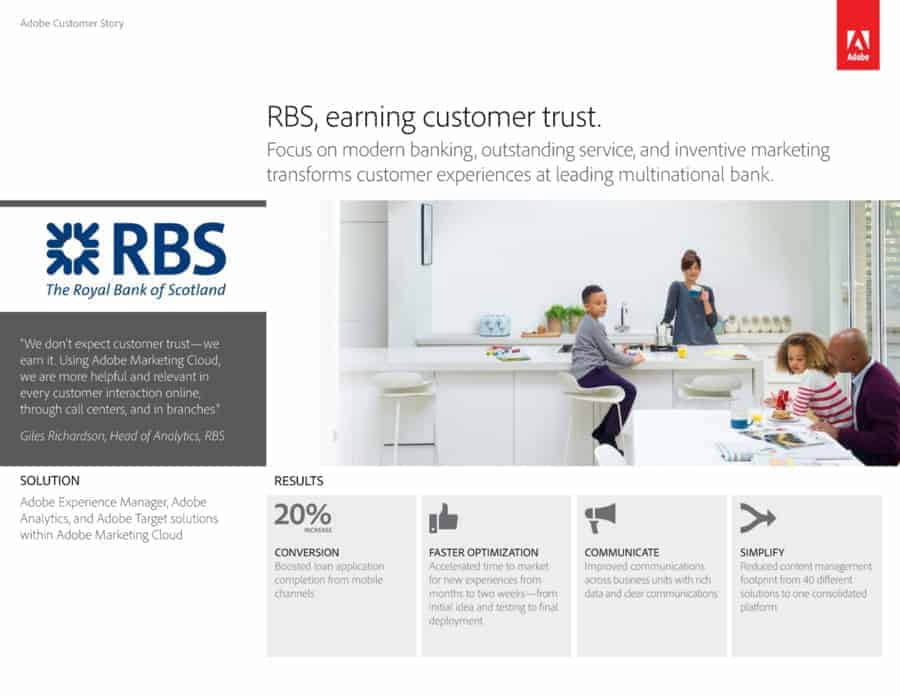
E. Reach Out to Influencers
Having a big name in your corner can be invaluable when it comes to generating leads and boosting sales. They can help you win audience trust and get more sales. Identify influencers who have an audience similar to yours, and work with them to promote your products or services.

F. Leverage Existing Relationships
Don’t forget the power of referrals and word of mouth! Reach out to existing customers and ask them to spread the word about your business. You could also showcase their testimonials via social media videos or posts.
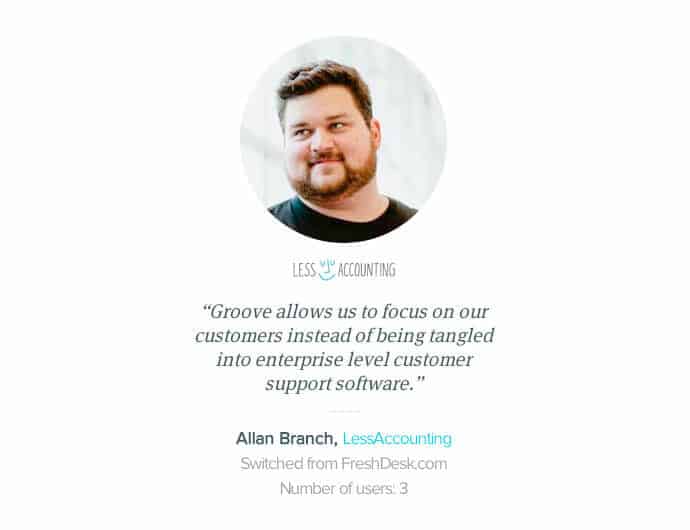
G. Create an Optimized Website
Once you have the essential elements of your website in place, it's time to start optimizing for lead generation. The key to successful lead generation is driving organic traffic to your website and making sure your content resonates with potential customers.
Here are a few tips for optimizing your website for maximum lead generation:
Optimize Your Content – Creating content that covers topics related to your product or services is a great way to draw potential customers to your website.
From blog posts to whitepapers, ensure that all of your content is high-quality and relevant. Additionally, be sure to include keywords within the content you create so it can be easily found through search engine optimization (SEO).
Utilize Landing Pages – Creating landing pages specifically geared towards lead generation is a great way to capture potential leads.
Include forms where visitors can sign up for newsletters, and get reports, discounts, or other offers. This way they are more likely to want to take an action.
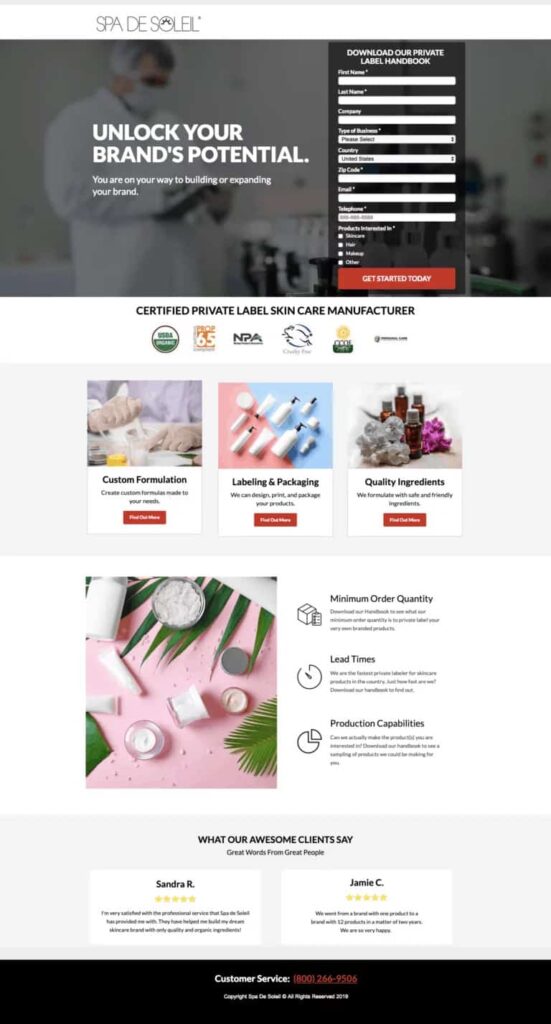
I’ve also written a detailed post on what it takes to create high-converting landing pages. Check it out for more information on how to get leads via landing pages.
Use Different Types of Media – Including videos, infographics and other visuals on your website can be a great way to engage visitors. Visuals help keep visitors on the page longer and are more likely to be shared.
Share Published Posts on Social Media – Leveraging social media is an effective way to reach potential leads and increase traffic to your site. Make sure you have active accounts on the most popular social media platforms and post regularly.
By following these tips, you can create an optimized website for lead generation and drive organic traffic to your website. With time and effort, you can generate more leads and grow your business.
H. Offer Opt-in Forms
Placing opt-in forms on your website or blog can help capture leads who are interested in learning more about what you have to offer. You could offer free downloads or an email newsletter subscription in exchange for their contact info.
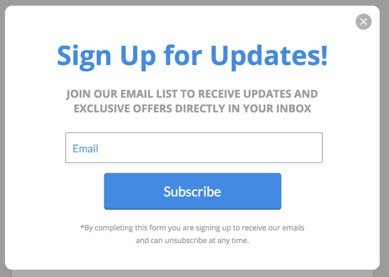
I. Use Retargeting Ads
Retargeting ads (or “remarketing” ads) allow you to show relevant ads to prospects after they've interacted with your website or content. This helps keep your brand top-of-mind and increases the likelihood of them converting into customers.
3. Work on SEO
Once you’ve written great content, it deserves to be seen! Investing in SEO is the equivalent of having an awesome billboard on a major highway – people can see your content from miles and be drawn to it.
Sure, you could get by without investing in SEO, but then you’d just be the tiny store tucked away in a back alley somewhere. Don’t let your content be forgotten!
With proper on-page SEO tactics, you can make sure that your content has a greater chance of being shared and clicked on.
Search engine algorithms consider factors like keyword density and backlinks when deciding which content should be displayed at the top of search results.
In fact, when you look for a keyword on Google, you’ll see the phrase and its variations in bold in the search results. Check it out:

This shows just how important it is to use the right phrases.
By optimizing your content for relevant keywords, you can make sure it appears in more searches and increases your visibility.
But remember, SEO isn’t something you can just turn on and off.
It requires consistent work to make sure your content stays relevant and highly ranked. Investing in SEO now will pay off for years as long as you keep up with the algorithm updates and SEO best practices.
If you want an expert’s insights on using SEO for lead generation, check out my podcast interview with Jeff Baker, the CMO of Brafton.
4. Invest in Email Marketing Campaigns
Email marketing campaigns are a great way to increase lead generation and build relationships with potential customers. By using email campaigns, you can easily target specific groups of people who may be interested in your products or services.
Additionally, email campaigns allow you to easily segment audiences based on different criteria such as demographics, location, purchase history, and more. This can be extremely helpful for targeted marketing efforts and personalizing your messages.
If you want to learn more about email segmentation, check out this video below:
You can efficiently nurture leads with personalized emails and automated follow-ups until they convert into paying customers. You can also use email campaigns to re-engage inactive customers and keep them up to date on new offers.
Email marketing campaigns are also a cost-effective way to increase your reach since they don’t require much upfront investment, and you can easily track their success with built-in analytics tools.
With these powerful tools at your disposal, you can maximize lead generation and streamline the customer journey from start to finish.
5. Leverage PPC Advertising
PPC stands for Pay-Per-Click, and it could be what your business needs to get leads in the door.
No more waiting around hoping people come across your website; with PPC, you can actively target potential customers and have them coming to you! Plus, it's easy – all you have to do is choose the right keywords, set a budget, and get started.
You'll be able to target potential customers with ads tailored specifically for them, helping increase brand awareness, generating more leads and ultimately closing more sales. For lead generation, you can even set up lead form extensions.
Not only that, but you'll have full control over your budget allowing you to set limits on what you're willing to spend per click or per day. If there was ever an easy way to get the results you want without breaking the bank, PPC is it!
If you want to get started with PPC advertising, you can check out the best PPC tools here.
What Are the Best Tools For Lead Generation?
Using specialized tools for lead generation can help you maximize your reach and convert more leads. Lead generation tools are designed specifically to provide data-driven insights that help you make informed decisions.You can learn exactly who, when, and how you should target.
Additionally, specialized lead generation tools allow you to track key metrics such as open and click-through rates, conversion rates, and return on investment.
By utilizing these tools, you can identify areas for improvement and optimize your campaigns for higher conversion rates. In a nutshell, lead generation tools can accelerate your sales funnel.
Based on my experience, here are the top lead generation tools that you should check out:
1. Salespanel – For Lead Generation and Lead Nurturing
Salespanel.io is an all-in-one sales and marketing tool used to create, manage and optimize lead generation campaigns. It can help you nurture leads, score them according to their sales potential, and convert them into customers.
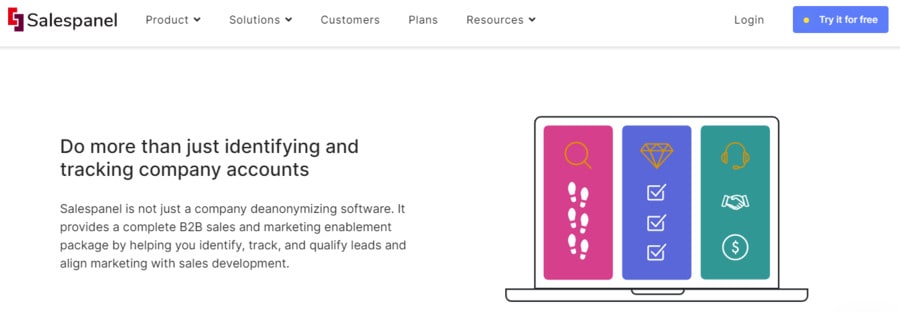
2. Agorapulse – For Social Media Lead Generation
Agorapulse is great for managing multiple social media accounts in one place. Plus, its analytics capabilities make it one of the top options for finding leads on social media.
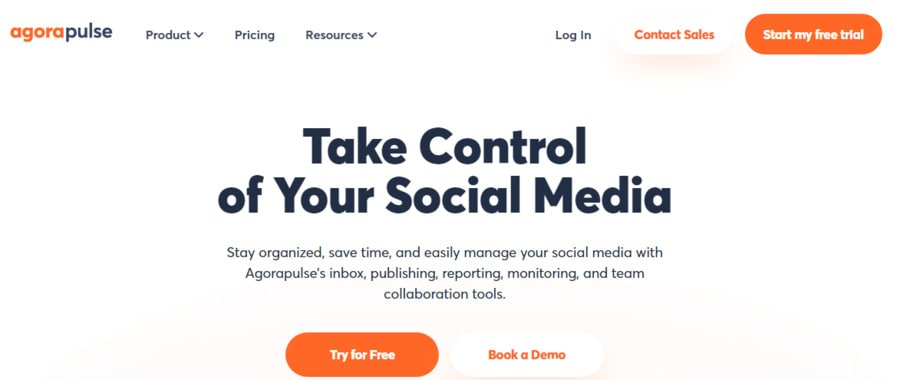
3. GetResponse – For Email Marketing
GetResponse is one of the go-to tools when it comes to email marketing – and with good reason. Its intuitive interface makes it easy to craft targeted emails and track their effectiveness.
If you want to learn more about how to use this platform effectively, check out my post on using GetResponse as a lead generation tool.
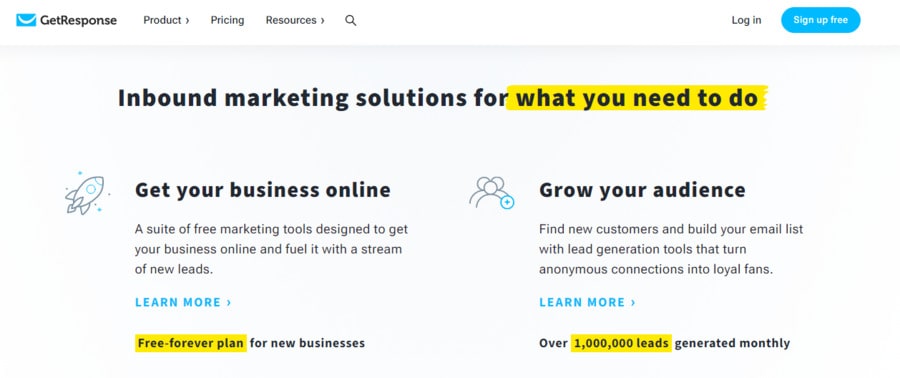
4. Semrush – For SEO
Semrush is one of the best tools out there for optimizing content, one of the key components in any lead generation strategy. With one click you can have your content optimized for search engines and ready to draw in leads.
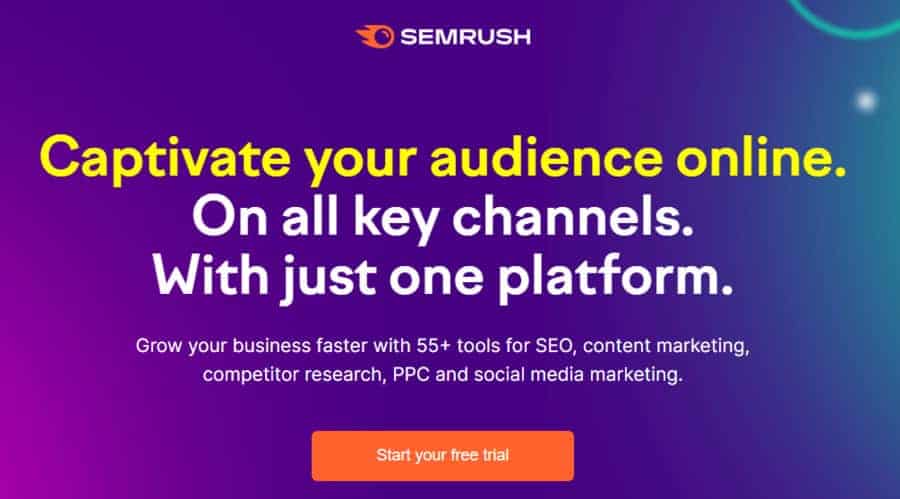
For more specialized tools, you can check out my post on the best lead generation platforms out there. It has details of key features, pricing, and more for 21 platforms!
Understanding Lead Generation Marketing With Examples
In this section, we'll be going over some of the most popular lead-generation strategies in use today. From webinars and ebooks to surveys, these tactics are all effective ways to generate leads for your business.
To get more leads and turn them into loyal customers, you need to learn how to use these different tactics.
Here is an infographic that shows how different strategies can work for lead generation and nurturing:
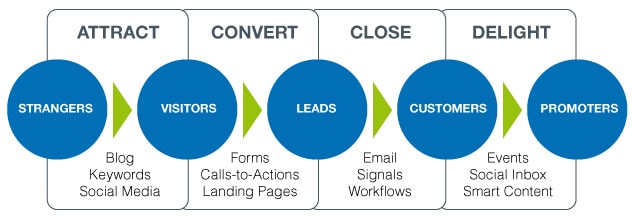
Now that you know how to make the best use of lead generation strategies, let’s take a look at some examples:
1. Webinars
Webinars have become a popular choice in recent years, as they provide an interactive way to share content with potential customers in real time. This lead generation strategy is generally used by B2B companies.
Webinars can also be used to build relationships with prospects and showcase all that you have to offer. This allows companies to gain insights into customer interests that can be used in crafting future campaigns.
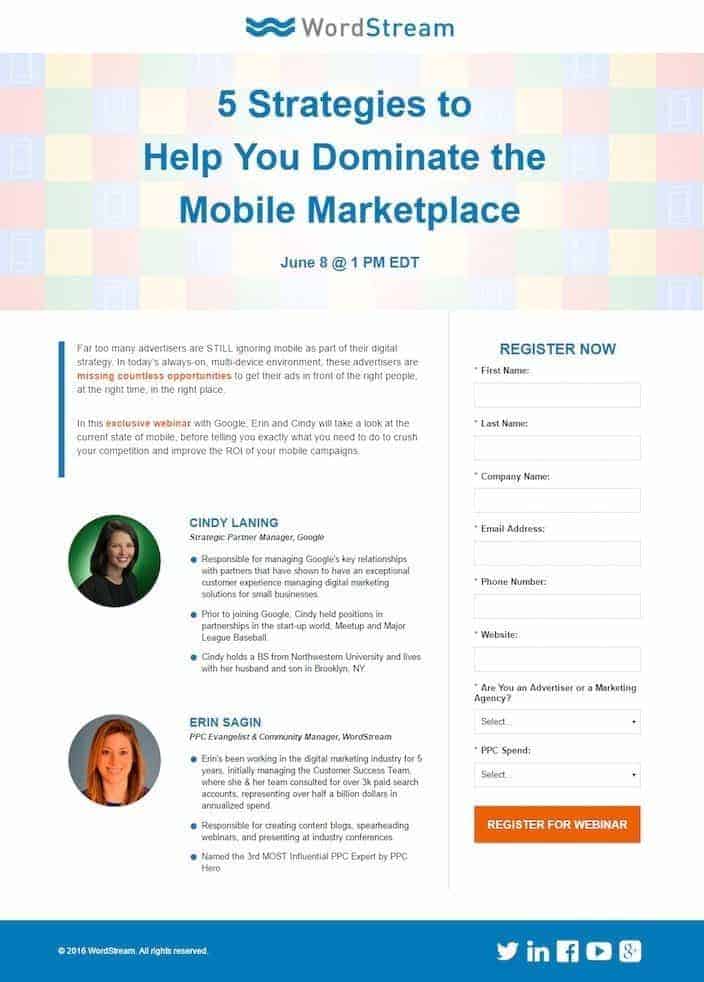
2. Ebooks
Ebooks are another great option for lead generation campaigns, as they provide valuable information in exchange for contact information from potential customers.
This form of content marketing is particularly well-suited for businesses in the tech sector, as it allows them to demonstrate their expertise in a specific area and capture leads in the process.
Here is an example from my website:
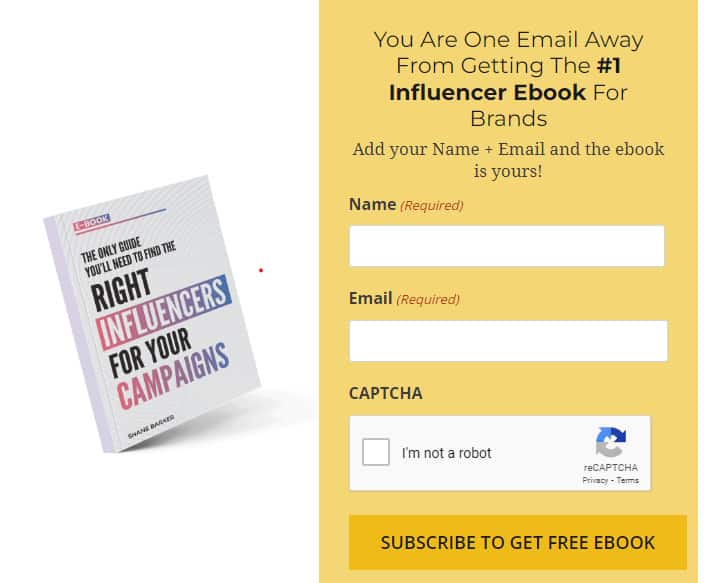
3. Surveys
Surveys are also an effective tool for lead generation, as they provide valuable insights into customer preferences that can inform future campaigns.
Companies can use surveys to ask questions about topics related to their industry in order to understand customers better. This data can be used to craft better targeted campaigns in the future.
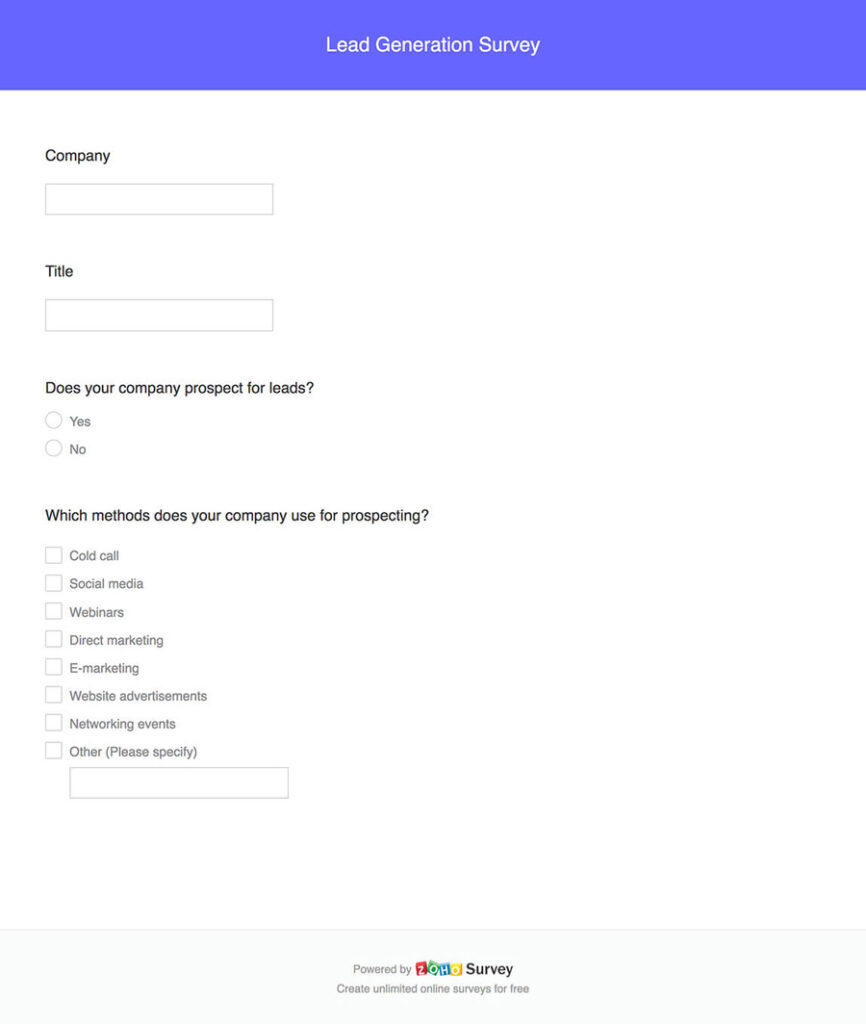
4. Quizzes
Quizzes can be used as a fun element for your content marketing strategy.
You can add quizzes where people answer questions to find out which products are best for them, or learn more about a brand.
The best part is that quizzes are easy to create and can be shared via multiple channels. You can add them to your emails, website, or even share them on social media channels.
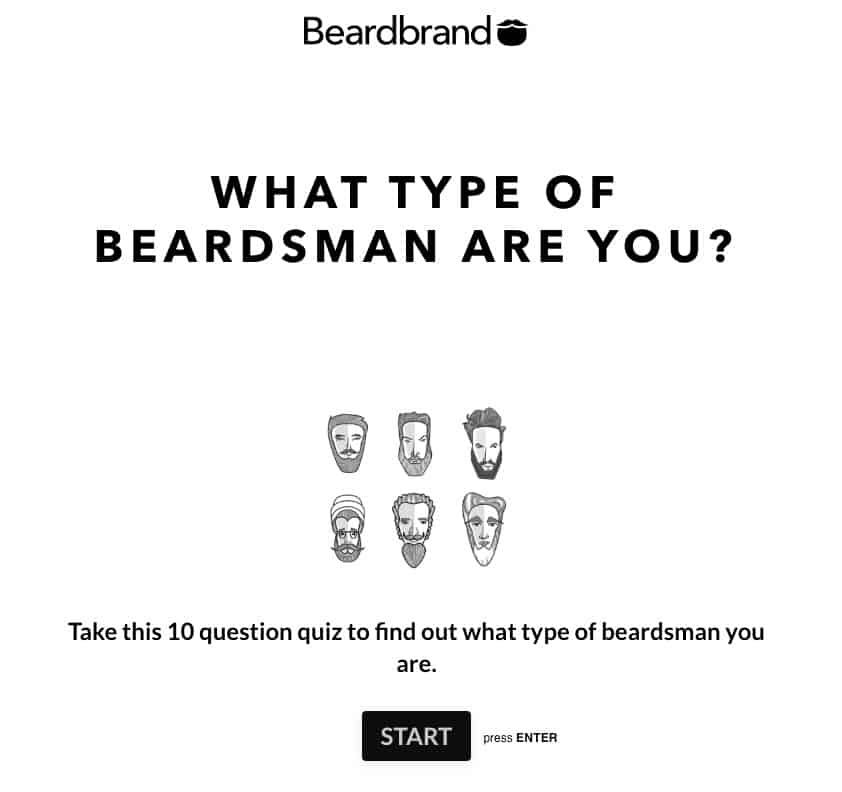
5. Giveaways
These campaigns often attract interested users who are willing to submit contact information in exchange for a chance to win some type of prize or reward.
Giveaways can be used as incentives to encourage people to sign up for an email list, follow a brand on social media, or take part in a survey.
They can also be used as part of an engagement campaign with the potential to drive more website traffic and help create brand awareness.

Why is it Important to Get Quality Leads?
When it comes to leads, quality matters – a lot! After all, you don't want to spend time and money on leads that won't get you results. Poor quality leads can not only be expensive but they can also take away valuable resources that could have been used elsewhere.
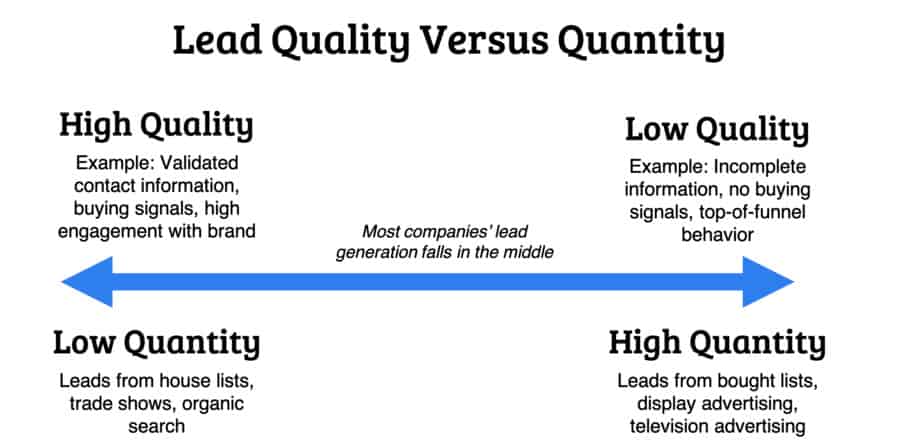
That's why it is so important to invest in high-quality leads; they will help increase your ROI and ensure that every dollar spent is well worth it. So if you are looking to see success with your lead generation efforts, make sure you put your trust in leads of the highest caliber. Quality is key!
Understanding Different Types of Leads
Leads can be broadly classified into four types: Marketing Qualified Lead (MQL), Sales Qualified Lead (SQL), Product Qualified Lead (PQL), and Service Qualified Lead (SQI).
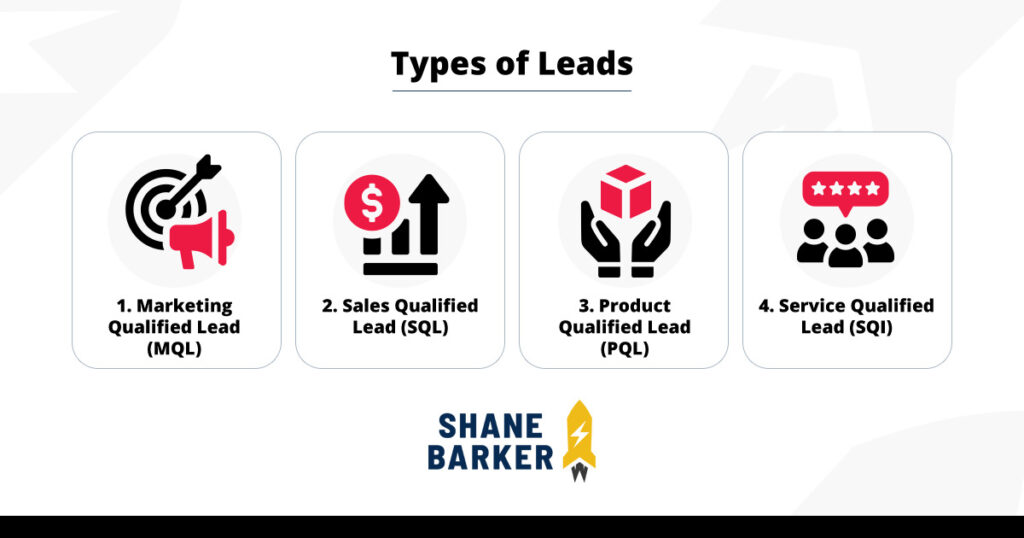
1. Marketing Qualified Lead (MQL)
An MQL is a prospect that has expressed interest in buying a product or service based on your marketing efforts or via other channels.
Marketing teams typically use marketing automation tools to track and monitor the effectiveness of different campaigns and identify potential customers who show the most promise. Once these leads are identified, they are passed on to sales representatives for further qualification.
2. Sales Qualified Lead (SQL)
An SQL is a lead who is considered viable enough to enter the sales process. Generally speaking, this means that they have been qualified by marketing and found to meet the criteria set forth by the sales team.
In the hierarchy of the sales funnel, SQLs come after MQLs. They are typically considered to be warmer leads. Here is a visual representation of them in the funnel:
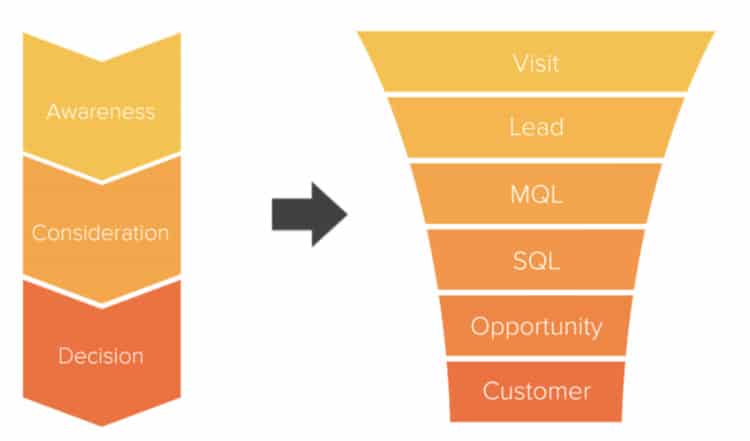
Sales representatives will then use their own assessment of a prospect’s needs and wants to determine if they are an appropriate fit for the business.
3. Product Qualified Lead (PQL)
A PQL is a lead that has an active interest in the products or services offered by your business after having used the product or services in some form.
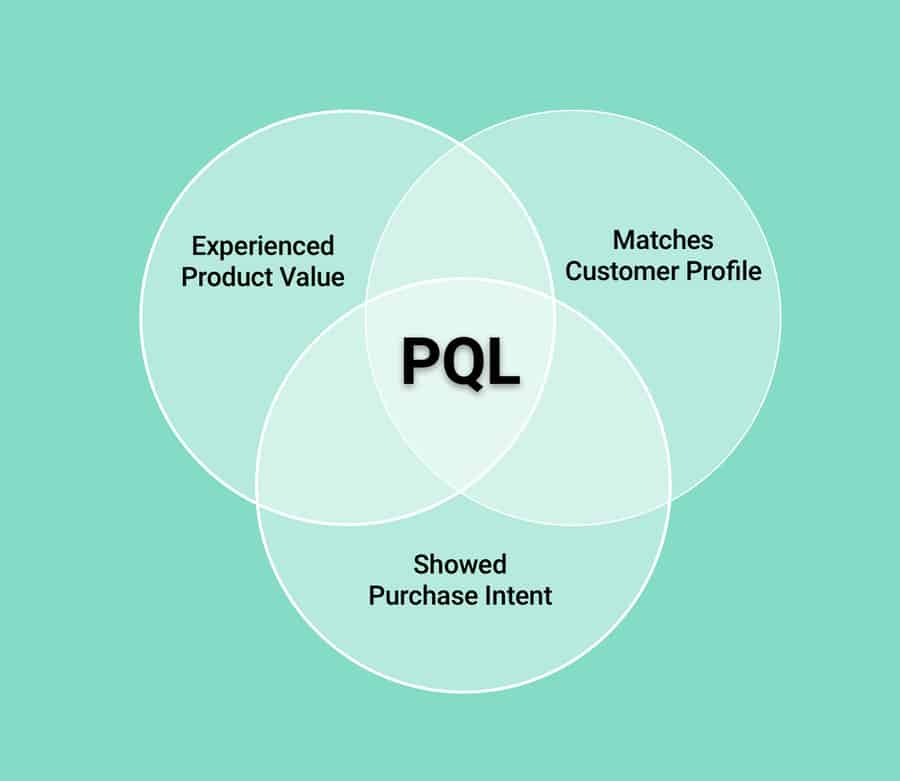
This usually means that they have already engaged with your product or service in some way, such as signing up for a trial, making a purchase, or providing feedback on features.
In order to identify these leads and maximize their potential value, companies can utilize customer relationship management (CRM) software and analytics tools to track customer interactions over time.
4. Service Qualified Lead (SQL)
A Service Qualified Lead (SQL) is a lead who has expressed an interest in conversion through customer service or support.
These leads typically come from customer surveys, contact forms, chatbots, and other feedback mechanisms. Basically, it can be any channel that allows customers to provide information about their needs and issues with the product or service.
You can use this information to create more targeted customer service initiatives, such as creating automated chatbots or offering personalized content that meets the specific needs of each customer.
No matter what type of lead your company pursues, it is important to have a strategy in place for nurturing those leads into paying customers.
By taking the time to qualify and nurture leads appropriately, companies can ensure they are investing their resources in prospects that are most likely to convert.
How to Qualify a Lead
Once you've found a lead, the next step is to qualify them. This means finding out if they're genuinely interested and able to make a purchase.
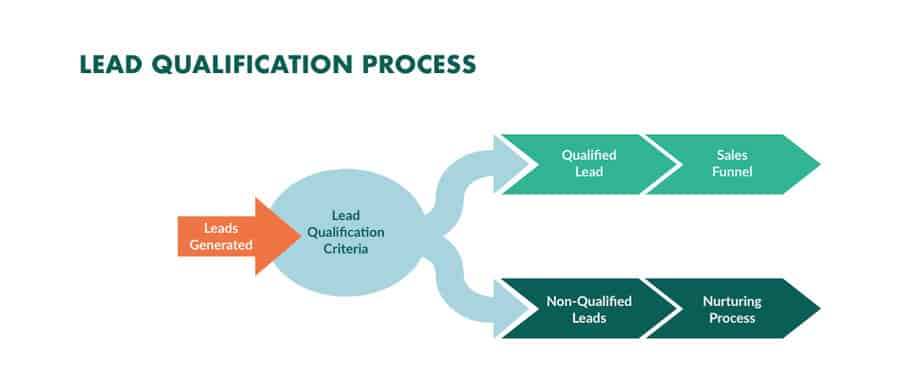
How do you get the answers you need? Simple! All it takes is a few tough questions, some follow-up emails, and maybe – just maybe – a dab of detective work.
And don't worry if you can't tell right away if a lead is hot or cold; that's why we created this guide to help you find out for sure.
Ready to find out who your next customer will be? Let's get started!
1. Ask Qualifier Questions
First, you'll need to know what questions to ask. These should include basic information like their name, company size, and contact details.
But don't forget to dig a little deeper; try asking them about their current situation and whether they're looking for a solution like yours. That way you'll have a better sense of how likely it is that they'll become a customer.
At this stage, you want to identify who the decision-maker is. This could be a person or group of people who are responsible for making final decisions related to your product or service.
2. Follow Up to Assess Needs
It's also important to follow up with leads after your initial conversation. Check in every few days or weeks (depending on the nature of their inquiry) to see if anything has changed.
Assess if any new needs have arisen. You may even want to suggest a product or service that matches their needs and see if they're interested in learning more.
3. Look Up Your Leads Online
Finally, don't forget to do a bit of detective work. See what you can find out about your leads online. Look for things like any past purchases they may have made or comments they've left on other websites.
Doing this will help you better understand their buying behavior and determine whether they’re likely to make a purchase from you.
At the end of the day, qualifying a lead is all about gathering enough information so that you can make an informed decision about whether or not to pursue them as a customer.
With these tips in mind, we guarantee you'll be able to easily distinguish between hot leads and cold ones – no Sherlock Holmes required!
Why Should You Not Buy Leads?
Regarding buying leads, I've got one piece of advice for you: Don’t do it.
Buying a list of potential customers may seem like a surefire way to quickly find people interested in your product or service. That's true – but the leads you buy might not be legitimate or accurate.
Plus, the quality of purchased leads is often low which means many of them will never become actual customers. You could end up spending money on bad data, getting poor returns on your investment, and damaging your reputation in the process.
What’s more, there are so many laws about personal data and privacy out there now. Buying lists containing information about potential clients may break one or several of those laws (which could come with hefty fines).
So, it's probably better to avoid buying leads altogether. It's far more effective and less risky to build a solid marketing strategy.
You should focus on targeting potential customers who already have an interest in your product or service than wasting time and money on purchasing unknown leads.
Ready to Start Lead Generation?
Alright, let's do this! Now you know the answer to the question of what is lead generation in digital marketing. And you are clear with the basics, you need to put your knowledge into action. It’s time to start creating content that will help attract leads.
Make sure you're leveraging social media, SEO strategies, email marketing, and other methods of outreach so you can get your message in front of as many people as possible.
With consistency and efforts in the right direction, you should start seeing some serious ROI from your lead-generation activities soon enough! Good luck!
Do you have any questions about lead generation in digital marketing? Please feel free to mention them in the comments section below.


Related Articles
What is Digital Marketing? Everything You Need to Know
Best Blogger Outreach Tool – 21 Tools to Minimize Your Outreach Efforts
33 Free Google Marketing Tools for Marketers and Developers
22 Best Online PR Tools to Build and Monitor Media Relations
Digital Marketing for Startups: The Strategies to Use in 2024